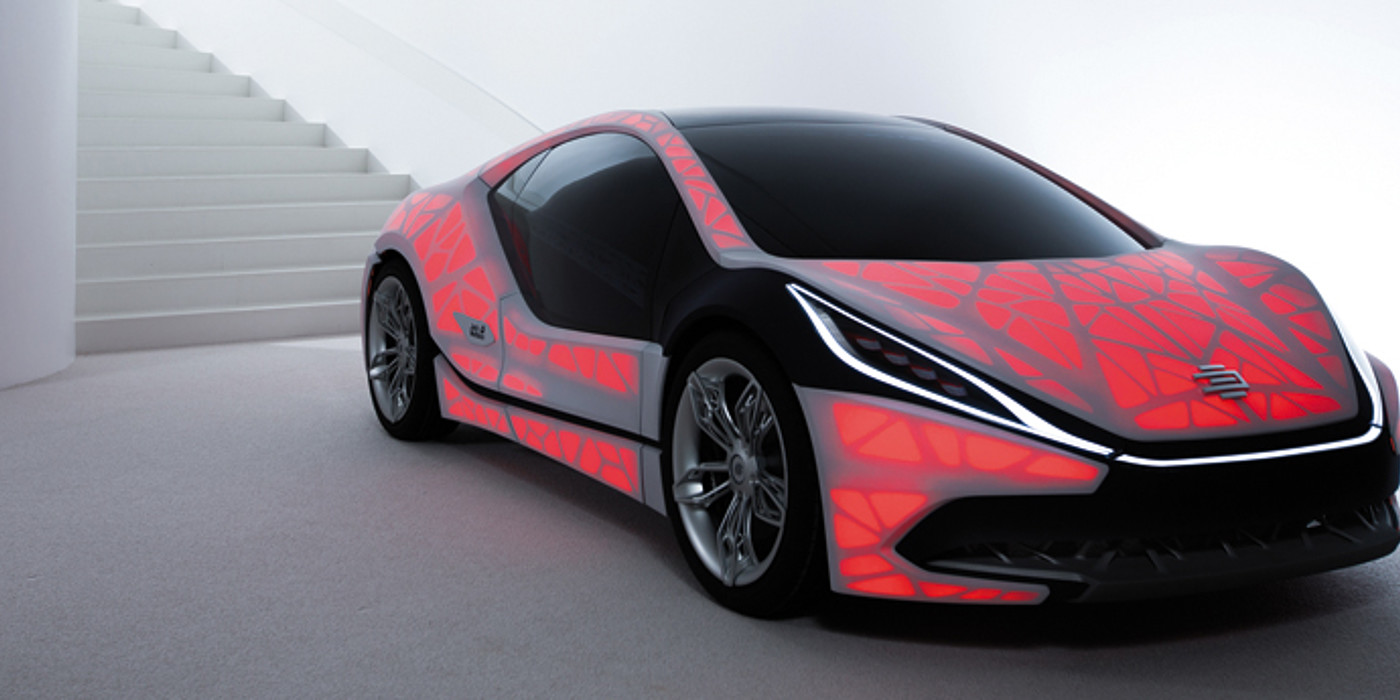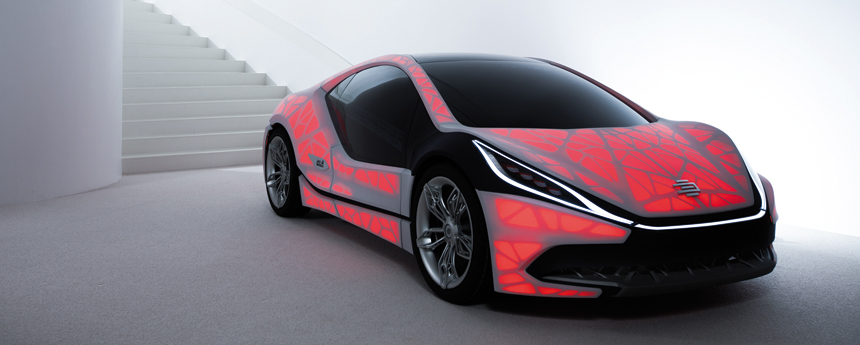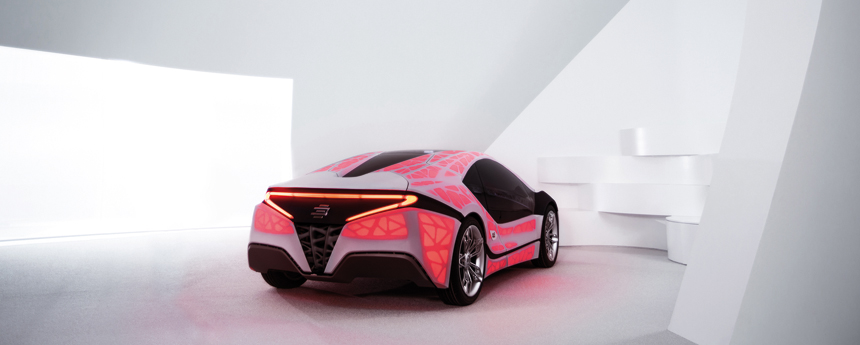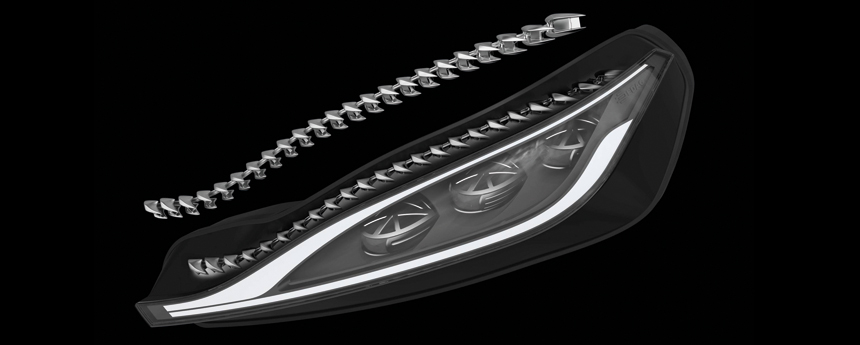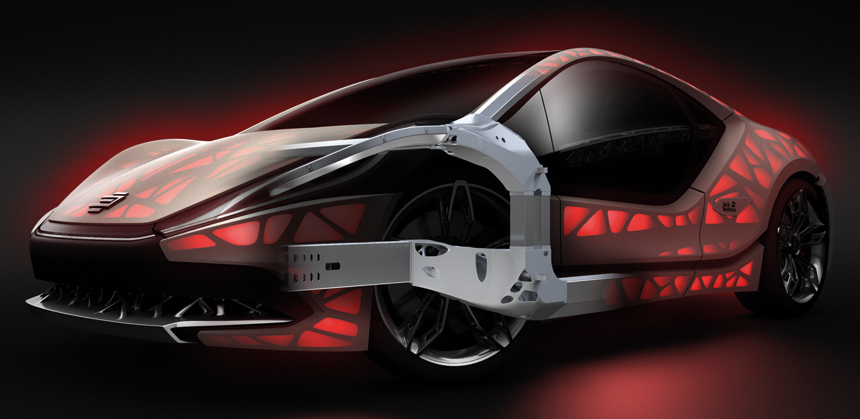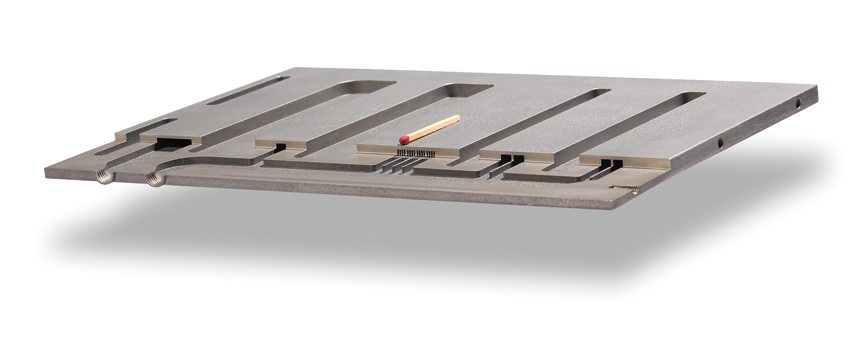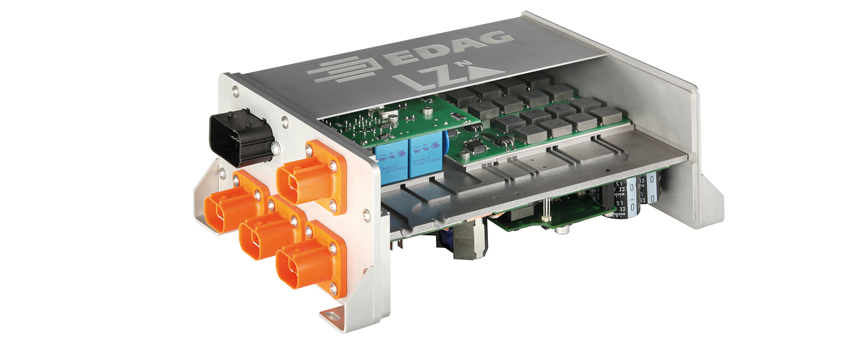If we think about lightweight design in automotive engineering, then the focus is predominantly on the use of lightweight materials such as aluminium, carbon, magnesium or fibre composites.
But are the lightweight design approaches applied to date really enough to achieve the ambitious weight and emissions targets for the sustainable vehicles for our future mobility? What would happen if development engineers were to allow themselves to be inspired by Nature, the leading expert in lightweight, efficient and sustainable design? Engineering service provider EDAG will be providing the answer at the IAA '15, with the German premiere of its concept car "EDAG Light Cocoon".
A vehicle that takes the bionic pattern of a leaf as its design basis, and converts it into the ultimate in lightweight, intelligently networked body structures. A concept that illustrates sustainable methods for the automotive industry and at the same time shows the technological potential of additive manufacturing.
The Wiesbaden based design engineering company have examples of technology which show that the combination of bionic design and additive manufacturing is not just pure Utopia, and these could soon become reality: in Frankfurt, the company will be presenting the model of a fully functioning, additively manufactured headlight and a new type of spaceframe concept for a lightweight, easy to manufacture vehicle struc-ture. A further example of the practical use of additive manufacturing technology that development specialists EDAG will be presenting is a hybrid power electronics housing with an ultra lightweight cooling structure.
Stability without waste: the "EDAG Light Cocoon"
The "EDAG Light Cocoon" builds on a completely different philosophy to achieve the ultimate in lightweight targets. Like an organic skeleton structure, the vehicle concept favours an approach in which material is only actually used in areas where it is abso-lutely necessary for function, safety and stiffness.
The result is the "EDAG Light Cocoon": a load bearing, branch-like carrying structure which meets all requirements imposed on structurally relevant components, despite the fact that less material is used. With the chances afforded by additive manufactur-ing, it is now, for the first time ever, possible to create such complex structures. A technology which, on account of tool-free production, will in the future carry extremely interesting economic potential and at the same time offer extremely variable production possibilities," explains Jörg Ohlsen, CEO of EDAG Engineering GmbH.
The outer body skin of the "EDAG Light Cocoon" - also the ultimate in lightweight de-sign - was likewise inspired by Nature. Just like the structure of a leaf, which has a lightweight outer skin stretched over it, a lightweight protective skin covers the "EDAG Light Cocoon" - although in this case, it is made of a textile fabric. Outdoor specialists Jack Wolfskin supplied a tried and tested stretch lightweight fabric that is also ex-tremely weatherproof, to serve as the new outer body skin for the project.
In addition, the unusual combination of a skeleton structure and fabric also makes it possible to integrate an new type of lighting concept, which for the first time ever in-cludes the complete vehicle. Not only does the LED backlighting system make the structure of the Cocoon visible; in fact it transforms the vehicle into a screen. The look is no longer static; the customer can change the appearance of his car at any time, and select the colour of his choice. The variable light design is in line with consumer requirements for greater individuality.
Maximum freedom with maximum cooling
At the IAA, EDAG will be presenting the first fully functioning, ready-for-approval model of a headlight which illustrates the extensive potential of additive manufacturing. This innovative project bears the signature of EDAG's new light laboratory and is pursuing the objective of further enhancing the luminous power of the LEDs used by means of an active/passive cooling system. Optimum heat dissipation through additively manufactured, bionic cooling structures and a number of other exciting components make it possible to improve the headlight's performance while at the same time reducing weight. The new degree of freedom provided by additive manufacturing means that branched shapes can be created, and this makes it possible to meet aerodynamic requirements and produce optimum heat dissipating surfaces. What is more, very important market segments in the low-volume and high-performance sectors can be served at lower cost and with significant savings in investment, as the production method involved is largely tool-less.
Bionically optimised, hybrid manufactured spaceframe concept for multi-variant lightweight vehicle structuresn-intensive Fahrzeugleichtbaustrukturen
It is already evident that the EDAG Light Cocoon is a pioneering concept for the light-weight design of the future. In Frankfurt, EDAG will be demonstrating the fact that it is also a solution for another challenge in automotive development: the development of the bionically optimised, hybrid manufactured spaceframe body will make the increas-ing vehicle variance engendered by the large variety of drive systems and load categories more manageable. The vehicle bodies of tomorrow will not just have to become lighter, but also be more flexibly designed. The manufacturers are also expected to integrate the growing number of drive concepts and energy storage systems in the vehicle structure. The result is an increasing number of vehicle derivatives calling for body concepts that are adaptable and can be produced economically.
At the IAA in Frankfurt, EDAG, Laser Zentrum Nord (Hamburg), Concept Laser (Lichtenfels) and the BLM Group (Levico, Italy) will be joining forces to demonstrate the bionically optimised, hybrid manufactured spaceframe, a new angle on how to bring about a changeable, flexibly manufactured body concept.
Its success lies in the combination of additively produced body nodes and intelligently finished, conventionally manufactured sections. Thanks to additive manufacturing, the nodes can be highly flexible and multifunctional, to enable, for instance, different vehicle variants to be produced on demand in an extremely flexible production cell, without additional tooling, production equipment and start-up costs. Steel or aluminium sections serve as connecting elements. By applying varying thicknesses and geometries, these too can easily be individually adapted to the specified load categories.
The result is a bionically designed, load path-optimised spaceframe structure. As the process uses very little in the way of equipment and tools, it will be possible for all body variants to be produced economically and with the maximum possible flexibility in the future. Further, requirements for flexibility with regard to the ability to respond swiftly to fluctuating production volume requirements, and the adaptability of structural parts during a product's life cycle in the sense of a "learning and adaptable Industry 4.0 due to additive manufacturing" are also met.
